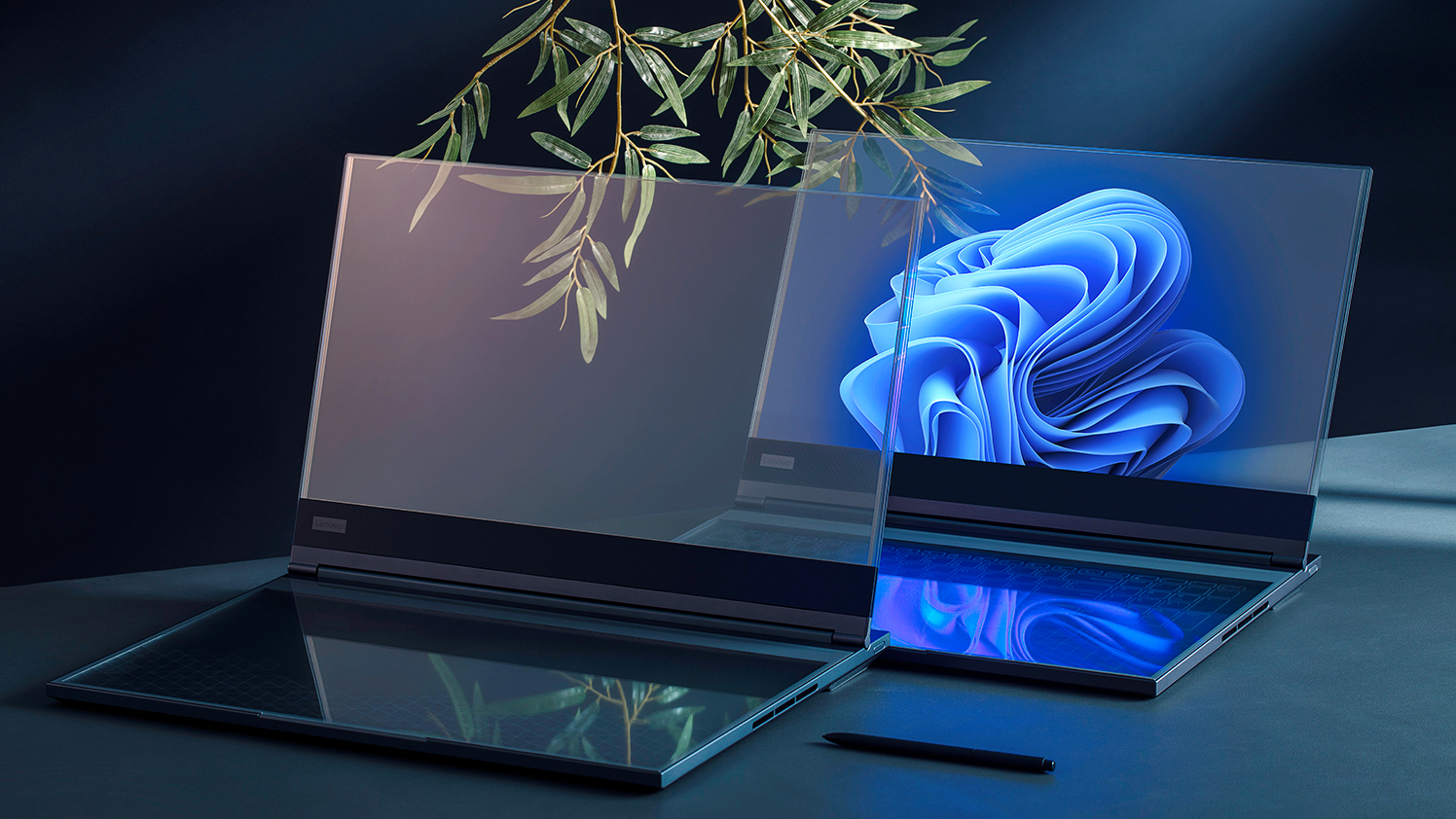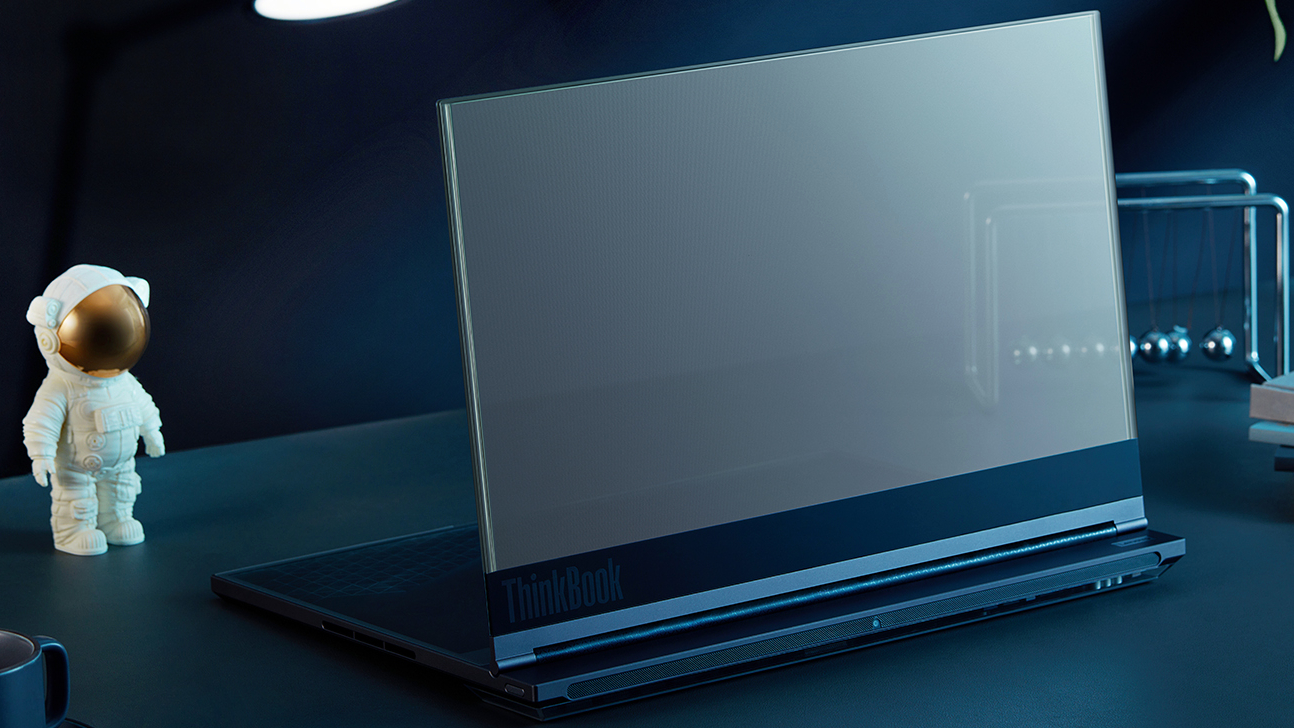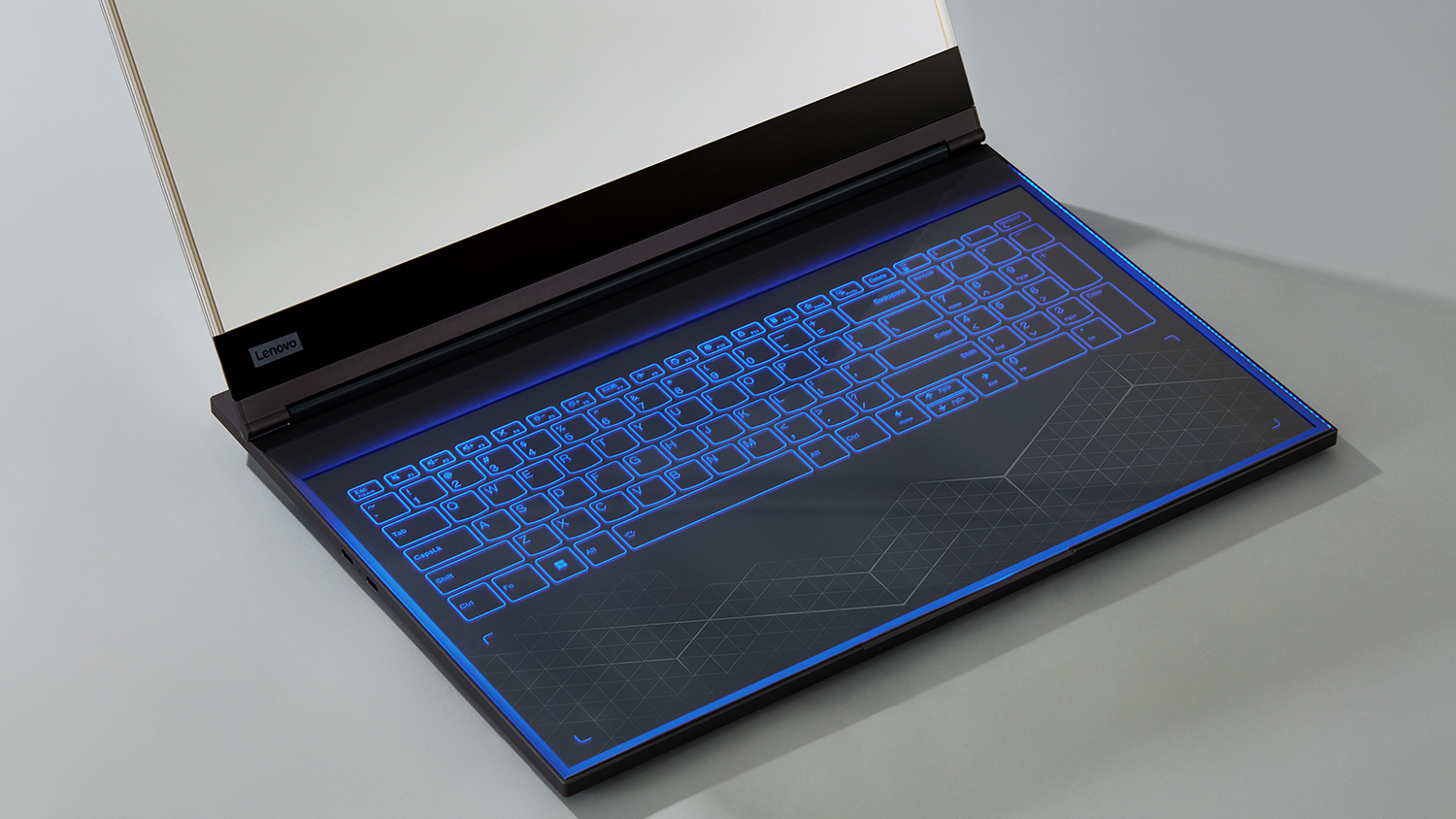Lenovo brought a transparent laptop to MWC 2024 that merges 'real and virtual' with AI help - here's how
Lenovo debuts a sci-fi transparent display laptop prototype with AI powers

Lenovo is at Mobile World Congress in Barcelona this week showing off a slate of its new products hitting store shelves in 2024, including some potential contenders for the best business laptop of the year.
But the most interesting piece of tech Lenovo brought to the show was never intended for a store near you. I'm talking about the ThinkBook Transparent Display Laptop, a proof-of-concept laptop design that's dominated by 17.3-inch transparent display.
It's been over a decade since Samsung brought a similar transparent laptop display prototype to CES, but Lenovo's model has the added power of micro-LED. I saw a prototype version of this laptop in person in San Francisco a few weeks before MWC 2024, and the display is so bright (Lenovo claims it can achieve a peak of 1000 nits) it almost hurt to look at.
Of course, I was sitting in a dim hotel room during a huge storm, so my brief hands-on impressions of Lenovo's Transparent Display Laptop should be taken with a grain of salt. I'm not sure it would be quite so dazzling outside at noon on a sunny day, but I'm intrigued by the idea of using a laptop with a see-through screen at my local coffee shop.
I became even more intrigued when Lenovo showed me the little camera embedded in the rear of the prototype. You could conceivably use it like the exterior camera on a tablet and take really awkward photos on vacation, but the intended purpose is a lot more intriguing.
The idea is that you could use a laptop designed like this to integrate the world into your workflow in real time. A digital artist making a restaurant website could put a beautiful brunch plate down on the table in front of the laptop, fire up the webcam and take a photo of the scene, then edit it on the transparent display while the original scene is still visible behind it.
But that's just a simple example. Lenovo has a lot more in mind for a proof-of-concept like this, including some AI-enhanced applications. Company representatives tried to give me a demo of an application which taps the power of Lenovo's own custom AI chatbot to identify things in the world through the laptop webcam, then answer queries about them. You might point the camera at a coffee shop menu in another country for real-time translation, for example, or perhaps record some video and then ask an AI to add some visual effects on top of it.
Get instant access to breaking news, the hottest reviews, great deals and helpful tips.
Unfortunately, the prototype wasn't working well during my time with it (I blame bad hotel Internet) and I didn't get a chance to see this AI app live in action. But hopefully it will be working in Barcelona this week, so our team members on the ground will have a chance to see how it works.
Luckily I did get a chance to follow up with Lenovo's Tom Butler, who serves as executive director of the company's Worldwide Product Management division. His comments are interesting because they elucidate how Lenovo is thinking about this tech, which is perhaps more interesting than hands-on impressions of the prototype itself since it's a proof-of-concept more likely to influence the design of future laptops instead of being sold as a real product.
With that in mind, here's a quick Q&A with Butler about why Lenovo designed this futuristic prototype, the potential for transparent displays in laptops and the possible ways AI may fundamentally shift the way we use our PCs in the next decade.
Why did you design the ThinkBook Transparent Display Laptop prototype?
Butler: As the widespread application of augmented reality (AR) and digital worlds continue to shape various industries, the evolution of laptop devices to cater to the increasing human-machine interaction needs in production and services environments becomes all the more pivotal. Transparent screens have surfaced as a promising foundation for addressing these requirements, offering an interactive interface that can enhance productivity and efficiency.
With the integration of AI Generated Content (AIGC) as a vital tool, laptops equipped with transparent screens are poised to effectively navigate and adapt to the evolving usage scenarios of the future. Consequently, this amalgamation of cutting-edge technologies stands as a testament to the continuous advancement and adaptation of devices to meet the dynamic demands of modern workplace landscapes.
What are the advantages of transparent displays in a laptop? Do you think they'll ever become popular?
Butler: Micro-LED transparent screens with their high transparency, contrast, and brightness are paving the way for the future potential of merging real and virtual environments within AI PCs. This innovative technology offers users the flexibility to adapt to different work environments, catering to their outdoor work requirements. These screens facilitate seamless integration of virtual and real worlds, enhanced by AI capabilities, to deliver users an immersive and efficient office experience.

The concept not only explores new user scenarios but also pushes the boundaries of product forms, embodying a professional approach to revolutionizing technology for enhanced user experiences.
How do you think AI will change the way we use laptops in the next decade?
Butler: The future of personal computing in an AI-driven world is rapidly evolving, with generative AI at the forefront of this transformation and the shift towards natural language processing which will not only change how users interact with their devices, but also opens up new opportunities for form factor innovation. Lenovo, as a trusted tech partner, recognizes the significant role AI will play in shaping the future of personal computing.
By harnessing AI's potential, Lenovo is gearing up to revolutionize its diverse portfolio, from PCs to smartphones, by making them AI-ready, AI-enabled, and AI-optimized devices. These future AI devices are set to be more powerful, responsive, personalized, secure, and intuitive than ever before, paving the way for enhanced functionality and immersive experiences.
Beyond PCs, AI is also reshaping digital devices, such as smartphones and tablets, to be more user-centric, conversational, always available, and personalized. Lenovo's collaborative efforts with strategic partners embody a shared vision to lead this transformative shift in personal computing, bringing forth a new era of innovative and personalized AI solutions designed to enhance the user experience while prioritizing security and privacy control.
More from Tom's Guide
- Groq lets you use multiple AI models quickly — here’s how
- Google Gemini: Everything we know about the advanced AI model
- I test AI for a living — here’s why Google Gemini is a big deal

Alex Wawro is a lifelong tech and games enthusiast with more than a decade of experience covering both for outlets like Game Developer, Black Hat, and PC World magazine. A lifelong PC builder, he currently serves as a senior editor at Tom's Guide covering all things computing, from laptops and desktops to keyboards and mice.


